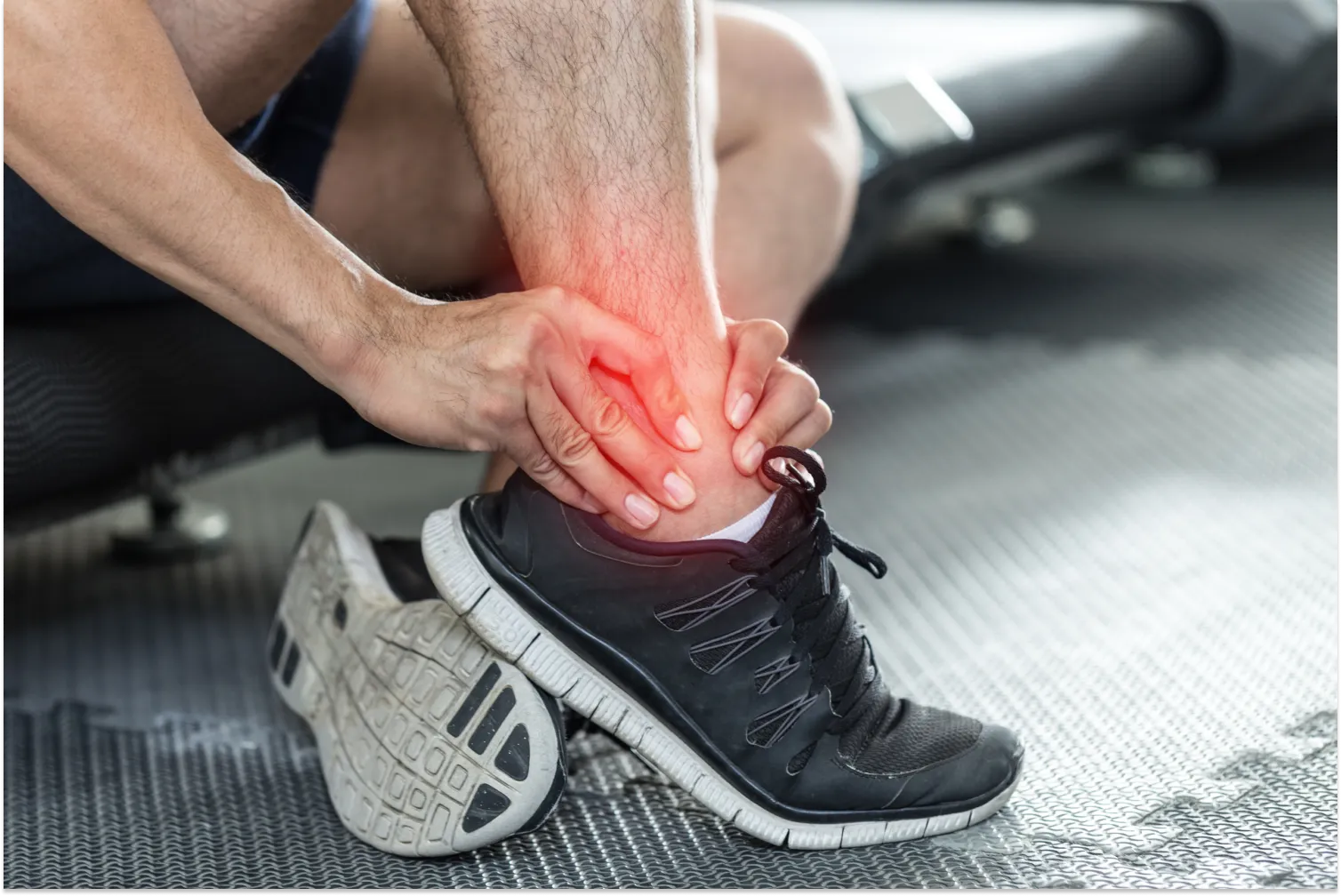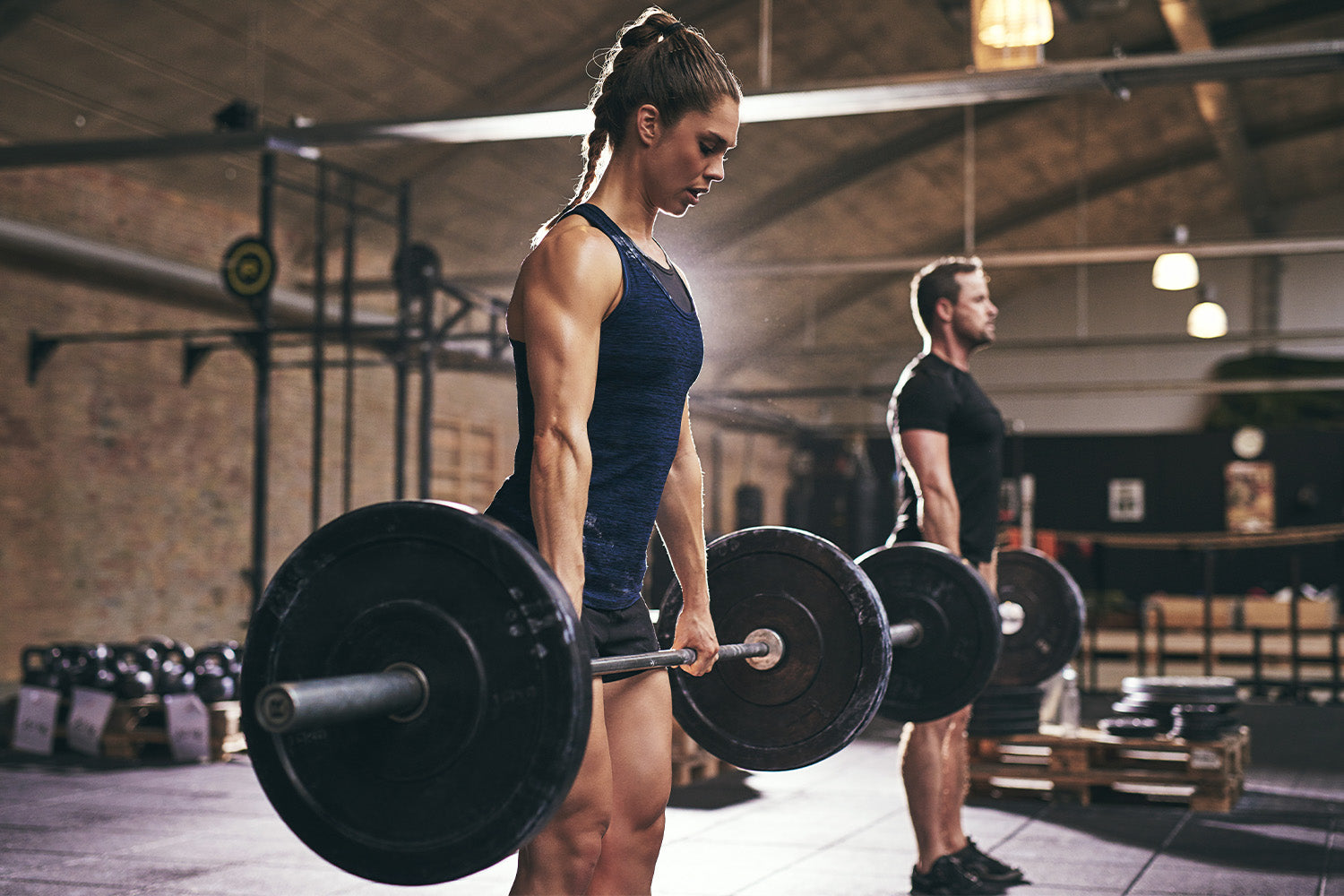Medically Reviewed By | Johannah Gregg, DNP FNP-C
If you want to reduce body fat, increase muscle mass, or just stay on top of your health, lifting weights is one of the most effective ways to exercise. Incorporating strength training into your fitness routine will maintain your lean muscle mass as you age, which is important for staying fit, preventing injuries, and managing chronic conditions if you happen to be dealing with any.
However, it can be incredibly frustrating when you make it to the gym, start lifting weights, and feel all-too-familiar pain in your joints. Lifting weights often requires your full range of motion in various joints, so it can feel almost impossible to do with any amount of joint pain.
How Can I Reduce Joint Pain?
Luckily, there are many ways you can help reduce and even prevent joint pain while working out. Here is a list of everything you need to know to prevent pain during a lifting session.
Warming Up
A good lifting routine begins before you even touch the weights. Especially if you experience joint pain, a proper warm-up routine can be the key to a lifting session without pain. You can vary your warm-up depending on your preferences and flexibility level, but it should always include some light movement and preferably a dynamic stretching routine.
Consider walking on the treadmill, swimming a few laps, or getting on the elliptical (a great low-impact option). Once your body feels warm, mobilize the muscles and joints. It’s best to so r whole body mobility activities, but give some extra attention to the muscles you will be working on that day.
Post Lifting Stretch
Even though you are probably ready to run out of the gym at the end of your workout routine, you should stay a few extra minutes to give your body time for a cool down and post-workout stretch. If you don’t give your body time to cool down, your muscles can have an uncomfortable build-up of lactic acid, which might cause stiffness and pain in the joints over the next few days.
Once again, consider doing some light movement and a full stretching routine.
Slowly Add Weight
While you might feel tempted to jump to your max weight when completing certain exercises, this puts you at risk for joint pain and injury. Rather than putting excessive pressure on your joints, try a lower-weight, higher-rep lifting routine. And once you feel totally comfortable with a lower weight, you can slowly start adding more.
However, patience is key when increasing weight; adding too much or skipping too many steps can increase joint pain. A general rule is to increase the weight by no more than 10 percent each week, which allows the muscles around your joints to adjust and build strength over time.
Mix Up Your Routine
We all have our favorite exercises in the gym. Whether these exercises are most comfortable for you, make you feel the most powerful, or work your favorite body parts, it can be difficult to switch up your lifting routine. However, adding variety to your routine is crucial for avoiding joint pain and injury.
Integrating different lifts daily will give your joints time to recover. A great way to do this is to focus on a different part of your body each week: arms on one day, legs on another, etc. While giving your joints time to rest, you avoid overworking them and prevent any pain or injuries during your next lifting session.
Focus on Form
It’s easy to get overly excited when you’re making progress and adding an extra ten pounds to your next set. The danger with this is that you can just as easily sacrifice your form in the process.
When people truly examine and focus on their form, they generally have to go down in weight. This is not a bad thing, though — focusing on your form allows you to work and protect your muscles in the healthiest and most efficient way.
Improper form while lifting adds an excessive amount of unnecessary stress on your joints which can lead to intense pain. Maintaining the proper posture and using your full range of motion while lifting will not only prevent joint pain, it will build healthier and stronger muscles.
Incrediwear Can Help With Joint Pain
In addition to the methods listed above, wearable tools are available to help reduce joint pain when lifting weights.
Below, we’re looking at how Incrediwear products support your joints on a biological level. Whether it be in the gym while you are lifting weights or in between workouts during periods of rest and recovery, Incrediwear has got you covered.
How Does Incrediwear Work?
When you slide on an Incrediwear sleeve or wrap an Incrediwear brace around an area, it works right away — the heat your body gives off activates the semiconductors infused within the fabric. The special fabric releases ions into your body that vibrate the cells, directing your body to focus blood flow and lymphatic drainage in the area.
More blood flow means more oxygen and nutrients, and more supply to the cells means faster healing and increased resilience to strain.
Incrediwear vs. Compression
Incrediwear is not a “compression product.” While traditional compression garments may temporarily relieve pain during activity, they can restrict blood flow to the area, working against what your body is naturally trying to do. Incrediwear, on the other hand, works in tandem with your body, supporting the biological processes that occur when we put stress and strain on joints, muscles, ligaments, tendons, etc.
This is also why you can wear Incrediwear during rest periods — it’s always working to help your body heal.
Incrediwear Products for Lifting Weights
Here are the sleeves, braces, and wraps that we recommend for those looking to reduce lifting-related pain in various joints:
Incrediwear Knee Sleeve
If you’re doing any weight lifting that engages the bottom half of the body, like deadlifts and squats, you’re putting a lot of stress on the knee joints. The tendons and ligaments within the knee, and the muscles around the knee, are all vulnerable to pain, inflammation, and injury.
Our best-selling knee sleeve is a favorite among top athletes — the light-weight fabric will support your knee at the gym while letting you retain your full range of motion. It comes in various sizes to ensure the most comfortable fit possible and can be worn underneath any pants or leggings/activewear.
Incrediwear Elbow Sleeve
Exercises that target the upper body, like bicep curls and bench presses, can put excess wear and tear on the elbows. Symptoms of Golfer’s Elbow and Tennis Elbow, two conditions that affect the tissues within the joint due to overuse or improper use, can manifest due to weightlifting.
Any pain or issues with the elbows during weightlifting can be aided with the Incrediwear Elbow Sleeve. It gives full coverage from the mid-bicep to the mid-forearm and is low-profile enough to fit comfortably underneath sleeves.
Incrediwear Wrist Sleeve
Engaging in upper body lifts, especially those that require you to grip a bar or handle with your hand, can put a lot of pressure on the wrist’s small joint. This can lead to pain from excess strain and even sprains.
Make sure to support this vulnerable area with the Incrediwear Wrist Sleeve. Simply slide it over your hand to take advantage of its cellular healing properties. It’s super lightweight and can easily fit in any part of your gym bag.
Incrediwear Back Brace
The back is central to most of the movements we make. When lifting weights, we are constantly engaging the muscles in our back. Deadlifts and squats can especially be rough on the lower back.
The Incrediwear Back Brace will drastically help with the workload that’s put on your spine and back. It wraps around your belly area and can be adjusted to your preferred level of support/tightness. We’ve recently redesigned it and now offer more sizes to ensure that it feels as comfortable as possible around your midsection.
Incrediwear Bandage Wraps
Our 5” Bandage Wrap and 2” Bandage Wrap are two of the most versatile products we offer. Keep one in your gym bag for whenever any pain arises — simply wrap the affected joint to the desired tightness and secure it with the velcro attachments.
Conclusion
Those who have a weightlifting routine will likely experience some form of joint pain and one point or another. Although weightlifting ultimately strengthens the body, the excess pressure, and stress that’s placed on joints temporarily wear them down.
Not only will this cause general soreness and aches, but it can even sometimes cause injury. Follow the tips outlined in this article to avoid joint pain, and check out our selection of Incrediwear products to tap into the new way to heal.
Sources:
Strength training: Get stronger, leaner, healthier | Mayo Clinic
Elliptical Benefits: 10 Reasons to Use This Cardio Machine | Healthline
How to Cool Down After Exercise | Right as Rain by UW Medicine
Read more

Medically Reviewed By | Johannah Gregg, DNP FNP-C While perhaps not the most glamorous part of the body, our ankles play an essential role in movement and day-to-day activities. These sturdy joints...

Medically Reviewed By | Johannah Gregg, DNP FNP-C While perhaps not the most glamorous part of the body, our ankles play an essential role in movement and day-to-day activities. These sturdy joints...






Leave a comment
All comments are moderated before being published.
This site is protected by hCaptcha and the hCaptcha Privacy Policy and Terms of Service apply.